Alan Paul's Blog, page 21
June 14, 2016
Fast Lane: The Underappreciated Genius of Shawn Lane
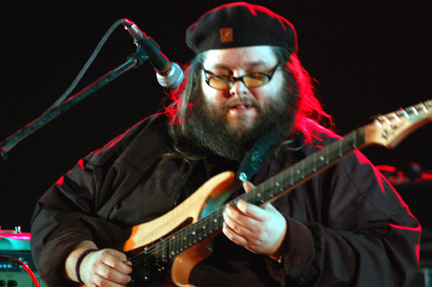
Shawn in Nazrul Manch in Calcutta, India 2003
Photo: Vivek Dev Burman
It would have been easy for memories of Shawn Lane to fade away after his 2003 death.
He recorded only two solo albums. His best-distributed work, 1992’s Power of Ten, barely captured his heart and soul and didn’t make a ripple in the day’s shred-saturated market. He spent years playing small clubs in his hometown of Memphis. He played only a handful of studio sessions for Johnny Cash, the Marshall Tucker Band’s Toy Caldwell and Cash, Willie Nelson and Waylon Jennings’ The Highwaymen.
But in Lane’s last decade of life, he and Swedish bassist Jonas Hellborg created an amazing body of mystical, mythical, improvisatory music. The magic they wove, often accompanied by master Indian musicians, garnered more notice in Europe than in the U.S., but it has continued to find audiences around the world.
More than a decade after his death, Lane is more popular than ever, with a steadily growing legion of admirers. Many of them are speed-obsessed guitarists who watch videos with slack-jawed awe.
Lane’s playing—his seemingly effortless virtuosity—is perfect for the YouTube age. When he was still a teenager, Lane’s playing was being dissected on bootleg cassettes by emerging guitar stars like Paul Gilbert. Even his most technical work was undergirded by soul and his work with Hellborg flows with grace and ease. Hellborg now worries if Lane’s newfound fans are missing the essence of his late partner.
“A church of Shawn Lane is developing and people talk a lot of nonsense,” says Hellborg on the phone from his home in Venice, Italy. “There’s a lot of myth-making and people picking up on all the wrong things. There is a lot of fretboard pornography—a focus on how fast Shawn could play. Of course he did and it was fantastic but what made it fantastic is what he played.”
“Shawn’s technique was incredible, but he had this remarkable soul underlying everything,” says Jimmy Herring, guitarist for Widespread Panic and Col. Bruce Hampton’s Aquarium Rescue Unit, with whom Lane often played. “If you could take all the technique away, you would still have this amazing, vulnerable person tapping into how he’s feeling emotionally and expressing it through his instrument. That’s a very rare thing.”
Hellborg and Herring are both master musicians themselves, and they talk about Lane with a childlike awe. Hellborg is driven by a fierce passion to tell the world about his collaborator, to see a fuller picture painted of this singular musical mind.
“He was a huge fan of musics from all corners of the world and was open to influences from the most obscure sources: avant garde composers, Indian music, Charlie Parker, Chinese tribal folk music,” says Hellborg. “He also had a tremendous interest and knowledge in art and film.”
Shawn Lane was a remarkably gifted musical talent who spent a lifetime seeking to harness his gift and find its truest, most pure musical expression. Even as life served him a series of setbacks, he seemed to be coming into his own as an expressive musician when he died of pulmonary complications on September 26, 2003, at the age of 40.
Lane, a native of Memphis, emerged as a teen guitar prodigy, joining a re-formed Black Oak Arkansas when he was 15 in 1978. He toured with the Southern boogie boys off and on for four years. Herring remembers first hearing these performances on tapes that were passed around Los Angeles’ Musician’s Institute like holy grails.
“I was in school with Paul Gilbert, who was just fanatical about Shawn,” recalls Herring. “A lot of guys looked at scales as three notes per string and if you had big hands, that became really easy; Paul had that in a headlock. Shawn was doing something different, unique and true to himself—and this was when he was 15, playing in Black Oak Arkansas! It was like, What planet is this guy from?”
Lane was self-educated, a voracious reader who became an expert in Indian music, cinema, piano playing and a wide range of other topics. Barry Bays, a longtime friend and musical collaborator of Lane’s, says that when he first met the guitarist in 1988, he was astounded on a trip to the Memphis library.
“He filled a cart and checked out 30 to 40 books,” says Bays. “The limit was five or six, but they would let him take whatever he wanted because they had known him since he was five. He would read five or 10 books at a time and have absolute recall on everything. He had an extraordinary mind.”
Bays says that he would fill notebooks at Lane’s house, taking notes of their conversations—“just like a college lecture.” Lane would discuss some of his favorite musicians, often Miles Davis or Frank Zappa, listing hundreds of recordings in chronological order and including all contributing musicians. Many of Lane’s friends have similar tales.
Col. Bruce Hampton, leader of the Aquarium Rescue Unit and something of a Southern Frank Zappa, says that on several visits to Lane’s house, he viewed “the greatest movies I had ever seen and never heard of.” Dickinson recalls countless hours spent watching obscure musical clips screened on a giant entertainment system.
“His VHS musical finds were mind blowing—and so were the big screen TV and sound system,” says North Mississippi Allstars guitarist Luther Dickinson, a longtime friend and former student of Lane’s. “And Shawn knew everything about it all. He would be watching a movie, singing the score, rolling a joint, conducting the score and reciting the dialogue all at the same time.”
Dickinson was 16 when he met Lane. His father, the late producer Jim Dickinson, had used Lane on some sessions and wanted his son to learn from him. As soon as Dickinson got his driver’s license, he began driving up from his Mississippi home.
“I would pay him $50 and we’d play for an hour or two, then just hang out all day,” Dickinson recalls. “He turned me onto jazz greats like Art Tatum, Cannonball Adderley and John Coltrane; classical composers; authors—most significantly, Noam Chomsky; film scores; and Nusret Fateh Ali Khan, the great Pakistani singer. The education I received from him was incredible.
“And Shawn would always preach about Jimi Hendrix’s soulfulness, because it was fashionable in the shred world to be down on Hendrix. Shawn would play ‘Red House’ so intensely, as an example of how technically difficult Jimi’s playing was.”
But, Dickinson is quick to add, while his lessons from Lane almost always turned into extended hang sessions, they always started with very meaningful guitar sessions.
“The first thing he told me was, ‘If something is difficult, find an easier way to do it. Don’t get hung up; use any means necessary to express yourself,’” says Dickinson.
“He used the finger grouping of index, ring and pinkie as an example. He never used that combination, preferring the strength of using index, middle and pinkie stretching and utilizing the power of his first and middle fingers, à la Django and Hendrix.
“Shawn would play three notes per string in groups of two or three strings at a time using creative variations of string grouping patterns. He loved playing descending melodies while ascending up the strings, or visa versa in every inconceivable variation.
“When explaining his ‘sheets-of-sound’ speed style Shawn broke it down to the concept of one thought triggering three notes, leading to one thought triggering six or nine notes, 36 notes, 64 notes, etc.
Shawn would have one impulse and play an endless number of notes with bebop-esque syncopations and accents popping through. One-string diminished and augmented arpeggios [three notes per string] sounded amazing when he would move them around the fretboard.
He would play a pattern up and down the neck. He broke it all down to large groups that triggered each other. He would think in combinations not notes and fly around with these patterns, using both a short and long delay creating sheets of sound. Shawn would be hammering on and pulling off while using hybrid picking, plucking out accents among the flurry with his middle finger.”
Dickinson met Lane while the guitarist was recording Powers of Ten, his 1992 solo debut. He had written most of the music on piano at his home, where he also cut the entire album, playing every instrument. Lane used the advance from the label to outfit his home with recording gear, including an early Mac and buy himself that sweet TV and entertainment center.
“He was a musician first, then a guitarist,” says Souvik Dutta, a friend of Lane’s who eventually distributed much of his music through his Abstract Logix label. “Shawn was an incredible pianist and a heck of a drummer. His endless pursuit and quest of knowledge was amazing.”
Hampton was also astounded when Lane sat down and played piano for him at his house. “It was like Bach Tatum,” he says. “His piano playing was every bit as original, innovative and skilled as his guitar playing.”
Bays says that Lane never really touched a guitar or bass if he wasn’t recording or gigging, but he constantly played drums and piano. Bays was with Lane when he bought the computers and home recording equipment he recorded Powers of Tenon.
“Shawn had never used a computer before, and when the Mac came in, we just hooked everything up and went out,” Bays says. “We came back at 10:00, he started working on the computer when he got home, and by five or six the next morning, he had learned the software and recorded a song for Powers of Ten.”
Bays says that Lane often composed songs in his head, away from an instrument. “We’d be out and he’d say, ‘I have an idea’ and then go home and sit down and work 18 or 20 hours until a song was done. Watching him work was fascinating. Sometimes he would also get ideas and sit down on the grand piano in the middle of the Oak Court Mall and start working out incredible ideas. Of course, crowds would start gathering with this stunned look on their faces.”
Back in Memphis after touring behind Powers of Ten, Lane needed a band and hooked up with Dickinson. His former student was playing around town with DDT, featuring his brother Cody on drums and bassist Paul Taylor. They mostly played small local clubs in Memphis, putting on powerful performances for sometimes tiny audiences.
“I saw Shawn play mind-blowing shows with that outfit,” says Herring. “He’d have a keyboard onstage and walk over to it, with the guitar still around his neck, and play incredible lines that sounded exactly like his guitar phrasing, while scat singing along in an Indian style.”
In 1993, Lane met Hellborg, who would become his musical partner and collaborator for the rest of his life.
“In the late Eighties, I was working with Anders and Jens Johansson, who were the drummer and keyboardist for Yngwie Malmsteen, and they told me they had met the most incredible guitar player while doing laundry in Memphis,” Hellborg recalls. “The laundromat was next to a music store so they walked in to kill time and were playing the UK song ‘Presto Vivace and Reprise,’ and this young guy comes over with his guitar and asks if he can jam, then starts playing this very complicated Allan Holdsworth song note-for-note. Then he played some Zappa. I needed to meet this guy, but it took several years.”
Bays recalls Lane’s excitement when he got a call from Hellborg, whose work with John McLaughlin he greatly admired, and his horror when he accidentally deleted a voicemail message and had to wait for the bassist to call again. They finally collaborated in 1993 on Abstract Logic, recorded with Kofi Baker on drums. Wanting a different drummer for some dates, Lane said he knew just the guy: Jeff Sipe from Hampton and Herring’s Aquarium Rescue Unit. When Hellborg, Lane and Sipe started playing together, they began with the bassist’s radical concept: pure improvisation, no compositions.
“He was a bit scared at first, but felt liberated by the fact that it was my group,” Hellborg says. “If it failed, it would be on me. He didn’t have to be the frontman or have any responsibility except playing. I gave him the freedom to do anything, but not try to play in a preconceived way to satisfy expectations of virtuosic brilliance. I said, ‘Just focus on the music and be free.’ ”
Lane’s playing blossomed. Hellborg, Lane and Sipe recorded four albums and performed many concerts from 1995–97. Already deeply interested in Indian and Pakistani classical music, Lane became obsessed with it, with a nudge from Hellborg.
“Shawn became incredibly well versed and expert in Indian music,” says Dutta. “And he did it on his own. In the Seventies John McLaughlin became fascinated with Indian music and traveled to India and studied with Ravi Shankar. Shawn sat in his house in Memphis and bought cassettes and listened voraciously and digested it all.”
“He was such a consumer of so much different music,” says Hellborg. “He could play just about anybody you could think of, from Allan Holdsworth to John McLaughlin to Billy Gibbons. They all had an influence on his playing, but he was his own unique voice.”
In 1998, the remarkable Indian percussionist V. Selvaganesh replaced Sipe and as the primary third musician in the Hellborg/Lane trio. The three often collaborated with Selvaganesh’s brothers V. Umashankar and V.
Umamahesh as well as other Indian musicians. Lane’s playing continued to evolve and grow as his immersion in Indian classical music grew ever deeper.
“He was playing notes that aren’t notes, which is the sign of a truly great musician,” says Herring. “It was about music and emotion, not notes or technique. You’re just talking about somebody who’s touched by the hand of God. You can’t even fathom it, or ask why or how and I gave up trying. You just have to admire the brilliance. It’s like watching Michael Jordan play basketball—someone who had a natural gift and then dedicated their life to nurturing it.”
“What made Shawn’s speed special was his heart, soul and intellect,” says Dickinson. “It was emotionally moving to witness a virtuosic experience. The last time I saw Shawn he picked up my Tele, turned up my Deluxe and played a 10-minute improv using only his middle finger to fret the guitar, sliding around like Derek Trucks! Afterward, he laughed and said he rarely played guitar but had enjoyed that moment. This helped teach me to cherish every time you play the guitar and to give it your all every time. Play every note like it’s your last because one of them will be. I never try to play speed guitar but I try to play from my heart in the moment; this is what I learned from Shawn in the end.”
Lane suffered from psoriatic arthritis, which grew more debilitating. He gained weight, oddly started smoking despite having breathing problems and a previous aversion to smoke and smokers, and struggled with addictions. None of it impeded his progress as a musician.
“There was no one alive who sounded like him and he just kept going up,” says Herring. “Some people say you can’t play really deeply until you’ve suffered. I don’t put much stock in that but Shawn was getting better and I know he was suffering, too. I think he had tapped into the rare ability to be a pure conduit from emotions to sounds. He could do the impossible and play his insides.”
Lane died of lung failure in a Memphis hospital on September 26, 2003, at the age of 40.
“People have taken liberties to discuss Shawn’s medical conditions which I believe should remain a private matter,” says Hellborg. “Yes, he passed on early and that is a tragedy, but what matters now is his contribution to music and guitar playing. He was a fine dude and he continues to touch people with his playing more than 10 years later.”
June 12, 2016
Dock Ellis LSD No-No
46 Years ago today – 6-12-70 – the Pittsburgh Pirates’ Dock Ellis through a no-hitter though “high as a Georgia pine.” He was tripping his brains out on LSD.
June 10, 2016
Anders Osborne with Phil Lesh and Friends 6/9/16
I really dig Anders Osborne, the Swedish/New Orleans singer and guitarist. Very cool that brought Phil has brought him into the family. Here’s the full set from Terrapin Crossroads, which was a fundraiser for Phil’s Unbroken Chain Foundation.
Setlist: Phil Lesh & Terrapin All-Stars at Terrapin Crossroads, San Rafael, CA – 6/9/16
Set: Rockin’ in the Free World > Sugaree, Brown Eyed Women, And It Stoned Me, Eyes of the World pl > Midnight Rambler, Wind> Fire on the Mountain, I Know You Rider
June 1, 2016
Allman Brothers Rehearsal Video, 1990
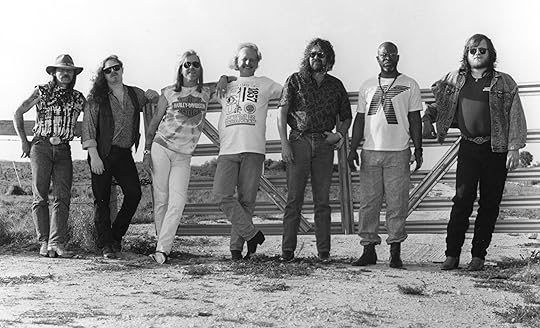
Foto – Kirk West
The Allman Brothers Band, “Statesboro Blues” – last rehearsal before launching Seven Turns tour, 1990. Pretty cool. Imagine how Warren Haynes felt at that moment playing that slide lick. The camera goes to the wrong place often and jumps around, but still… this is cool. I spy Kirk West and a few other folks I know in the small crowd of insiders. Anyone see anyone else they know?
May 26, 2016
Nine remastered Allman Brothers albums to be released on vinyl
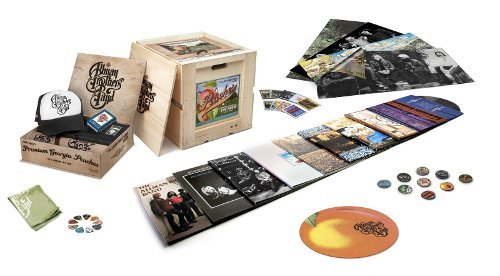
On July 22 Mercury/UM will reissue nine classic The Allman Brothers Band albums on 180-gram vinyl. The albums span 1969 to 1979 and will be remastered from the original analog tapes for the upcoming vinyl release. There will also be a limited edition set presenting the nine albums on 15 LPs in a specially made wooden crate limited to 500 pieces.
The band’s self-titled 1969 debut, 1970’s Idlewild South, 1971’s At Fillmore East, 1972’s Eat A Peach, 1973’s Brothers & Sisters, 1975’s Win, Lose Or Draw, 1976’s Wipe The Windows, Check The Oil, Dollar Gas , 1979’s Enlightened Rogues and the Live At Ludlow Garage recorded in 1970 will each be issued on 180-gram vinyl as part of the program.
Engineer Kevin Reeves remastered the LPs to 192kHz/24-bit audio and they were cut on copper plates using Abbey Road Mastering’s Direct Metal Mastering (DMM) lathe. The label aimed to faithfully replicate the original album artwork for each release. The previously mentioned limited set in wooden crate will also include a number of collectable extras in addition to the albums such as a USB stick featuring downloadable uncompressed audio files of the music found on the remastered LPs, a throwback ABB hat, a turntable mat and more.
The limited edition box set is available for pre-order here.
May 22, 2016
Zakk Wylde’s 10 Favorite Virtuoso Albums
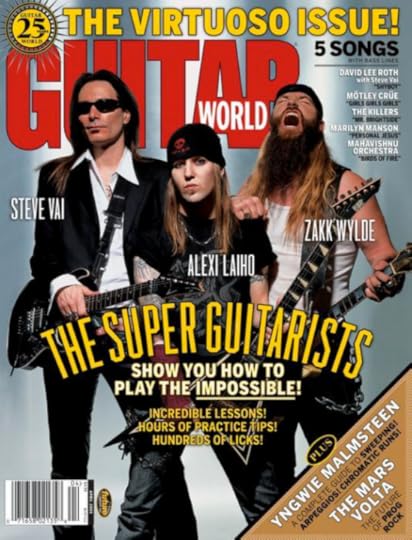 I interviewed Zakk Wylde for the cover story for Guitar World’s April 2005 Virtuoso issue. This list of Zakk’s Top 10 Guitar virtuoso Records ran with it.
I interviewed Zakk Wylde for the cover story for Guitar World’s April 2005 Virtuoso issue. This list of Zakk’s Top 10 Guitar virtuoso Records ran with it.
•Van Halen, Van Halen
(Warner Bros, 1978)
“It could be anything by Ed.”
•Ozzy Osbourne, Blizzard of Ozz
(Jet, 1980)
“It could be anything by Randy.”
•Pantera, Vulgar Display Of Power (US Release) [Explicit]
(East West, 1992)
“Dime’s pure brilliance.”
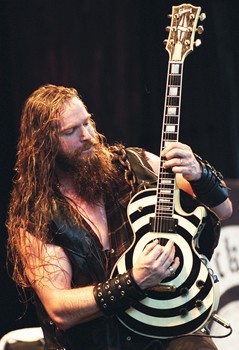 •Al DiMeola, John McLaughlin & Paco DeLucia, Friday Night in San Francisco – Live
•Al DiMeola, John McLaughlin & Paco DeLucia, Friday Night in San Francisco – Live
(Columbia, 1980)
“Unbelievable and an absolute must-have for all guitarists.”
•Alcatrazz, No Parole From Rock N Roll
(Grand Slamm, 1984)
“Yngwie’s unaccompanied solo is flat out inhuman. He did everything that Al di Meola does on steroids.”
•Gary Moore, Corridors of Power
(Mirage, 1982)
“Jesus Christ! He’s got it all – the tone, the chops, the singing, the riffs.”
•Jimi Hendrix, Band of Gypsys
(Capitol, 1970)
“’Machine Gun’ is unreal. Jimi is one with the instrument.’”
•Frank Marino & Mahogany Rush – Live
(CBS, 1978)
‘I just played this for friends and their jaws dropped. It’s way beyond good.”
•The Allman Brothers Band,At Fillmore East
(Polydor, 1971)
“Duane and Dickey just going for it.”
(Updated and expanded as The 1971 Fillmore East Recordings (6 CD Edition))
•Stevie Ray Vaughan, The Sky is Crying
(Epic, 1991)
“His version of ’Little Wing’ is proof that God exists.”
•Joe Satriani, Surfing With the Alien
(Epic, 1987)
“Joe’s phrasing reminds me a lot of Billy Gibbons, but he has the chops of doom.”
(Updated and expanded: Surfing with the Alien Legacy Edition (CD + DVD))
May 16, 2016
Gov’t Mule, ZZ Top Announce Tour Dates
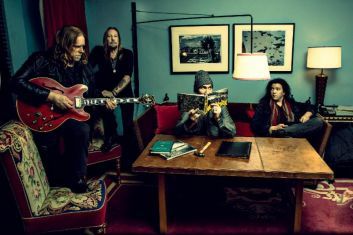
Warren Haynes and Gov’t Mule will play seven September dates with ZZ Top. Both before and after those dates, the band will be on the road with Blackberry Smoke.
The Mule’s archival album The Tel-Star Sessions, due out August 5, includes a cover of ZZ Top’s “Just Got Paid.” The album includes some of the band’s very first demos made in June 1994 at the Tel-Star Studios in Bradenton, FL. More info and here the track here.
Pre-sale tickets for the tour run will be available May 18 at noon, meanwhile the general on-sale will begin May 20 at 10 AM local time. All ticketing information is available here.
Gov’t Mule/ZZ Top Dates:
September 9 Jones Beach— Wantagh, NY
September 11 Sands Bethlehem Event Center— Bethlehem, PA
September 13 Pier Six Pavilion— Baltimore, MD
September 14 Koka Booth Amphitheater at Regency Park— Cary, NC
September 15 Celebrate Virginia After Hours— Fredericksburg, VA
September 17 Rosemont Theatre— Rosemont, IL
September 18 Hollywood Casino Amphitheater— Maryland Heights, MO
Other Gov’t Mule Dates:
June 3 Mountain Jam— Hunter, NY
August 11 Maine State Pier— Portland, ME (Blackberry Smoke)
August 12 Stone Pony Summerstage— Asbury Park, NJ (Blackberry Smoke)
August 13 Blue Hills Bank Pavilion— Boston, MA (Blackberry Smoke)
August 16 Saran Brewery— Utica, NY (Blackberry Smoke)
August 17 River Stage at Penn’s Landing— Philadelphia, PA (Blackberry Smoke)
August 18 Stage AE Outdoors— Pittsburgh, PA (Blackberry Smoke)
August 19 Meadow Brook Amphitheatre— Rochester Hills, MI (Blackberry Smoke)
August 20 Music Center at the Heights— Huber Heights, OH (Blackberry Smoke)
August 22 CEFCU Center Stage— Peoria, IL (Blackberry Smoke)
August 23 Simon Estes Amphitheater— Des Moines, IA (Blackberry Smoke)
August 25 Red Rocks Amphitheater— Morrison, CO (with moe. and Blackberry Smoke)
August 27 Humphrey’s— San Diego, CA (Blackberry Smoke)
August 28 Vina Robles— Paso Robles, CA (Blackberry Smoke)
August 30 The Mountain Winery— Saratoga, CA (Blackberry Smoke)
August 31 Sonoma Mountain Village— Ronhert Park, CA (Blackberry Smoke)
September 1 Cuthbert Amphitheater— Eugene, OR (Blackberry Smoke)
September 3 Big Sky Brewery— Missoula, MT (Blackberry Smoke)
September 4 Fireman’s Ball—Jackson, WY @ Fireman’s Ball (Blackberry Smoke)
September 20 Starlight Theatre— Kansas City, MO
September 23 Tabernacle— Atlanta, GA
September 24 Jannus Landing— St. Petersburg, FL
September 25 Fillmore— Miami, FL
September 27 Avondale Brewing Co.— Birmingham, AL
September 29 Innsbrook After Hours— Glen Allen, VA (Blackberry Smoke)
September 30 Harrah’s Cherokee Event Center— Cherokee, NC (Blackberry Smoke)
October 1 CMCU Amphitheatre— Charlotte, NC (Blackberry Smoke)
May 13, 2016
First Listen: Mudcrutch, ‘2’
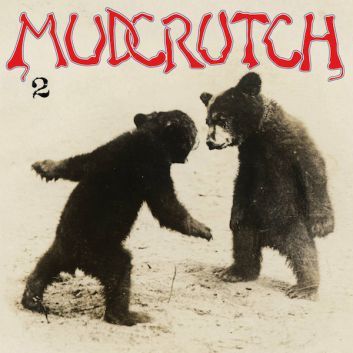
Tom Petty’s pre-Heartbreakers band Mudcrutch is reuniting for a series of shows and a new album, 2, which is now available to stream via NPR.
The band features Petty along with Mike Campbell, Tom Leadon, Randall Marsh and Benmont Tench. they are ruining after their 2008 debut – which represented their first work together in decades.
Oteil on One Way Out
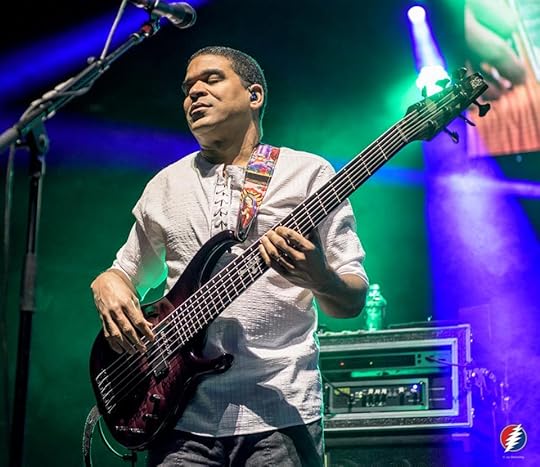
Oteil in his new gig with Dead & Co. Photo – Jay Blakesberg
In October, 2014, as the Allman Brothers band were preparing to play their final shows at the Beacon Theatre, I received the following email from Oteil Burbridge about his reaction to reading One Way Out: The Inside History of the Allman Brothers Band. I just found it. Very cool to read again.
Wow. Amazing man. I just wrote Jaimoe a second ago and told him how trippy it was to think about where I was in my life (5 years old in ’69) and compare it as the story progressed through the years, and then to watch the two stories converge in ’97. It’s like watching a movie and then all of a sudden you’re in it!
The way you approached it, having everyone tell their version of the same events is a stroke of genius. I know I’ve said it before but I learned so much from you about my own life! It really puts the biggest part of my adult life into focus and context. That’s a great personal gift. It’s really something to read your and Galadrielle’s books here at the end. I find myself having much more peace about things. Hell, I’ve been with crazy people for the last 17 years! I wouldn’t take any of it back.
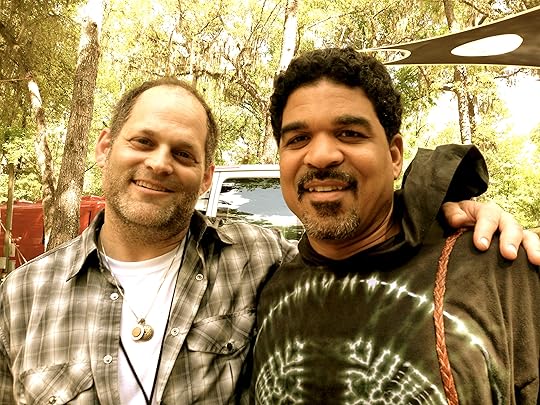
Wanee 2014
I should get a medal or something right? Oh yeah, that’s right, I did get a Lifetime Achievement Award from the Grammys at 47. 
Bless you man, you did a fucking great job.
-Oteil
NOTE: I know this is petty but the top review of One Way Out on Amazon is one of a handful of negative ones and it bugs me. If you read the book and enjoyed it, I’d really appreciate someone knocking that off the top perch. Thanks!
May 11, 2016
Gov’t Mule to Release The Tel-Star Sessions – first demos. Hear ZZ Top’s “Just Got Paid.”

The Mule. Macon, 1996. Awesome photo by Kirk West
Gov’t Mule will release a new archival album ,The Tel-Star Sessions, on August 5 via Warren Haynes’ Evil Twin Records. The album features songs taken from the group’s June 1994 demo sessions at Tel-Star Studios in Bradenton, FL.
The sessions with Allman Brothers Band producer Bud Snyde feature the original lineup of Haynes, Allen Woody and Matt Abts. They were intended to be the Mule’s debut album, but the recordings were never released until now. You can pre-order The Tel-Star Sessions by clicking this link. The new release will also include more awesome Kirk West photos like the one above.
Consequence of Sound just debuted a tune off the album, the Mule’s cover of ZZ Top’s “Just Got Paid.” “Early ZZ Top was definitely an influence on the Mule,” Haynes tells COS. “‘Just Got Paid’ was one of the first covers we worked up when we only knew a handful of songs.”
Gov’t Mule is currently in Europe. See their full tour schedule here.
The Tel-Star Sessions Track Listing:
1. Blind Man In The Dark
2. Rocking Horse
3. Monkey Hill
4. Mr. Big
5. The Same Thing
6. Mother Earth
7. Just Got Paid
8. Left Coast Groovies
9. World Of Difference
10. Bonus Track: World Of Difference (Alternate Version/Original Mix)



